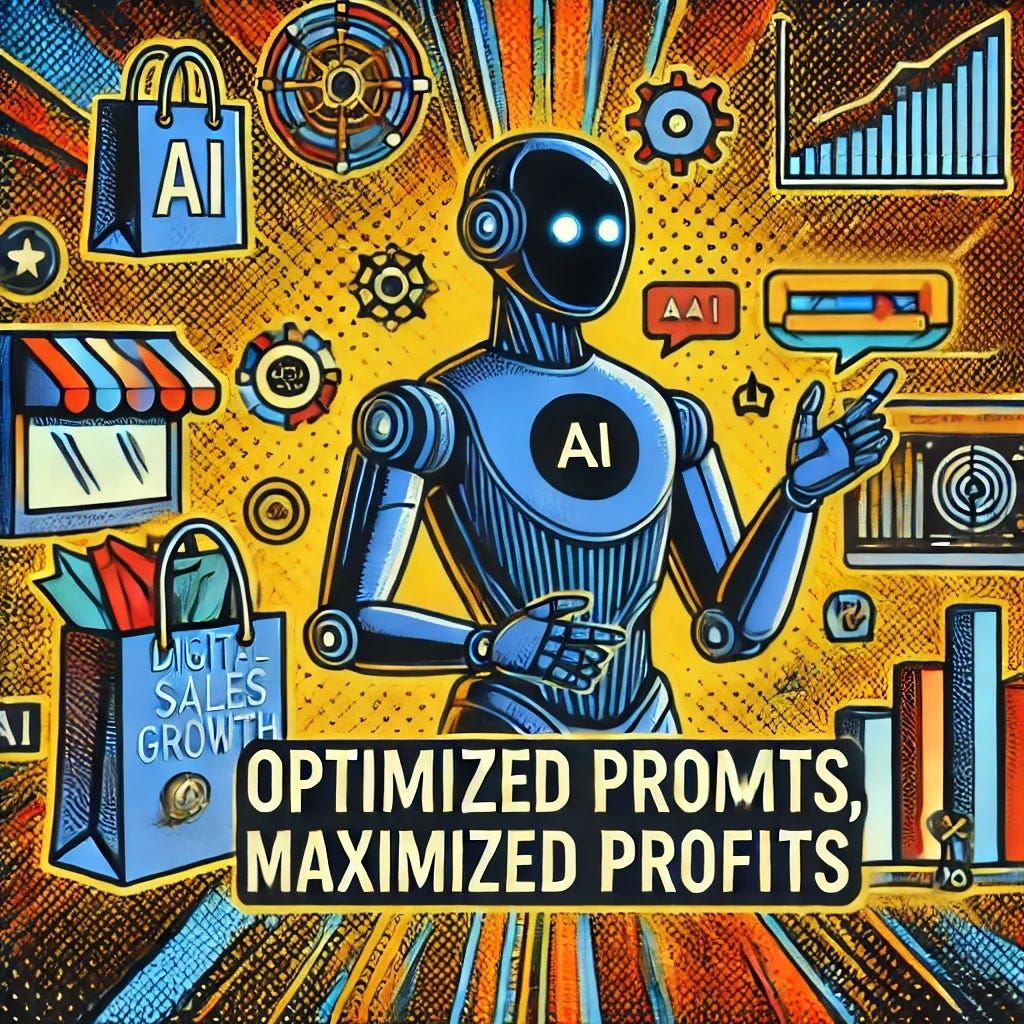Optimized Prompts, Maximized Profits — Redefining AI in eCommerce
The Strategic Importance of System Prompt Design in eCommerce
eCommerce has evolved beyond simple online shopping platforms into a highly sophisticated industry driven by data-driven decision-making and AI technologies. Today, AI-powered personalized customer experiences, operational optimization, and automated marketing strategies have become critical factors in determining business success.
Amidst this transformation, System Prompt Design has emerged as a key strategy for optimizing AI-human interactions. For AI models to function effectively, prompts must provide precise direction—not just as a technical setup but as a strategic design process directly linked to business objectives.
1. The Impact of System Prompt Design on eCommerce
(1) Differentiating Customer Experience (Personalized UX Enhancement)
One of the most crucial competitive advantages in eCommerce is customer experience (CX). AI chatbots, voice assistants, and recommendation engines deliver vastly different results depending on how their prompts are designed.
For instance, the same AI model can respond to customers in the following ways:
Basic Prompt: "This product might interest you."
Strategic Prompt: "Based on your recent searches and purchase history, we recommend this product. A 10% additional discount is available for you."
The latter prompt builds trust and engagement, significantly increasing conversion rates. A well-designed system prompt serves as a powerful tool to provide a personalized customer experience and foster brand loyalty.
(2) Optimizing Data-Driven Decision Making
eCommerce businesses rely heavily on data analytics to drive decisions. However, the efficiency of data collection and analysis depends largely on the design of AI prompts.
Consider an AI-powered customer service system that collects customer complaint data:
Basic Prompt: "Are you experiencing any issues? Please describe your concern."
Advanced Prompt: "Are you experiencing an issue with a recent order? Could you specify whether it is related to shipping, product quality, or payment?"
A well-structured strategic prompt enables the collection of more precise data, leading to faster problem resolution and improved customer satisfaction.
(3) Enhancing Operational Efficiency & Cost Reduction
eCommerce companies must optimize various operational components such as logistics, inventory management, and customer support. AI-driven automation only succeeds when prompts are efficiently designed.
For instance, in an AI-powered warehouse management system (WMS):
General Prompt: "Check current inventory levels."
Optimized Prompt: "Based on the past 30 days of sales data, Product A is likely to run out within the next three days. Would you like to reorder now?"
A predictive prompt like this reduces unnecessary inventory costs and enhances operational efficiency.
(4) Maximizing Marketing & Revenue Growth
In eCommerce, key performance indicators (KPIs) such as conversion rate (CR) and average order value (AOV) determine profitability.
System prompts play a crucial role in optimizing the sales funnel in AI-powered marketing automation.
Consider an AI-driven email marketing system:
Basic Prompt: "This product is back in stock."
Strategic Prompt: "A product you saved is back in stock! Enjoy free shipping if you purchase within 24 hours!"
The latter leverages urgency and personalization, directly improving click-through rates (CTR) and overall revenue.
2. Strategic Approaches to System Prompt Design in eCommerce
To build a competitive and high-performing system prompt design, eCommerce companies should follow these strategies:
(1) Customer-Centric Design
Prompts should be viewed as a strategic marketing and UX tool rather than just a technical feature.
Personalization: Use customer data to create tailored prompts.
Persuasive Triggers: Design prompts to guide user actions (e.g., urgency, scarcity, exclusive discounts).
(2) A/B Testing & Continuous Optimization
Unlike static configurations, system prompts should be continuously refined using data-driven insights.
A/B Testing: Compare different prompt variations to determine which drives the highest conversion.
Machine Learning Optimization: AI should learn from customer interactions and adjust prompts in real-time.
(3) Omnichannel Integration
Prompt design must ensure a consistent and seamless experience across multiple touchpoints, including websites, mobile apps, email, social media, chatbots, and voice interfaces.
(4) Ethical AI & Transparency
To build trust, prompts should be designed with ethical considerations in mind and avoid manipulative tactics.
Explainable AI (XAI): Provide transparency in how AI-driven recommendations are generated.
Privacy & Data Protection: Clearly communicate how customer data is used.
3. Conclusion: System Prompt Design as a Core eCommerce Strategy
In eCommerce, system prompt design is not just an interface element but a crucial business strategy that:
Enhances customer experience (Personalized UX).
Optimizes data-driven decision-making.
Maximizes operational efficiency (Cost Reduction & Automation).
Boosts marketing effectiveness and revenue growth.
By adopting a strategic approach to system prompt design, eCommerce businesses can transform AI from a simple tool into a powerful growth engine.
👉 Only businesses that effectively utilize AI-driven system prompts will lead the future of eCommerce. 🚀



